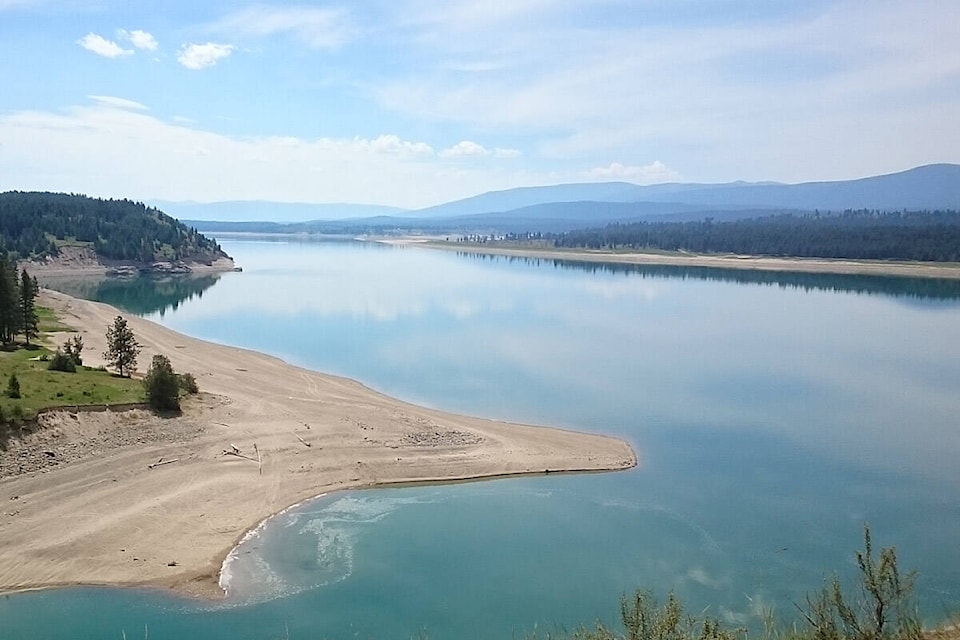While Canada and the United States continue to renegotiate an international water sharing agreement, the Regional District of East Kootenay is advocating for consistent water levels on Lake Koocanusa during the summer months.
The Columbia River Treaty, a decades-old water sharing and flood management agreement, is currently in the process of being modernized between the two countries, and one of the local sticking points is inconsistent water levels at the Koocanusa reservoir.
“We recognize the important environmental, economic and recreational impacts that having sustained water level creates and if an agreement can’t be reached around how to cooperatively manage water levels on both sides of the Libby Dam, Canada needs to pursue construction of its own dam at the border to protect these critical assets,” said Stan Doehle, Electoral Area B Director for the South Country region.
The RDEK board is sending a letter to the B.C. government, specifically requesting — as a negotiation point in the treaty — that the operation of the Libby Dam be coordinated jointly by the United States and British Columbia, in consultation with Indigenous Nations, with the goal of maintaining water levels between 2,445 feet and 2,455 feet between June 1-Sept. 30, subject to consideration of downstream impacts.
If that particular item cannot be negotiated into the treaty, the RDEK is requesting that the Government of Canada construct a dam with a height of 2,459 feet at the 49th parallel.
“I want to thank my fellow RDEK Directors for their support on this issue,” said Doehle. “As Director for Area B, I look forward to working with the Province and Global Affairs Canada to bring Lake Koocanusa into a new negotiated treaty.”
Lake Koocanusa water levels has been a sore point for locals in recent years, who are concerned about the impacts to tourism, recreation and development. An informal committee was formed with the stated goal of building a ‘weir’ across the lake to control water levels on the Canadian side of the lake.
A representative from the weir committee criticized the proposed term of the RDEK’s letter, noting that the water level should be kept consistent all year at 2,455 feet, rather than just seasonally in the summer months.
In May, B.C.’s Columbia River Treaty team released a report that analyzed the feasibility of building a ‘weir’ on Lake Koocanusa, a project that would resemble more of a dam-like structure across the reservoir.
The Columbia River Treaty, ratified in 1964, is a water sharing and flood management agreement between Canada and the United States, which led to the construction of four dams in the southern interior of B.C. and northwest United States. However, the treaty has been historically criticized for it’s lack of consultation with Indigenous Nations and communities, as the dams created reservoirs that flooded out communities and cultural sites, as well as adversely impacting agricultural and ecological values.
Negotiations to renew the treaty have been underway since 2018, with Ktunaxa, Okanagan and Secwepemc Nations invited to participate as observers by the Canadian delegation in 2019.
